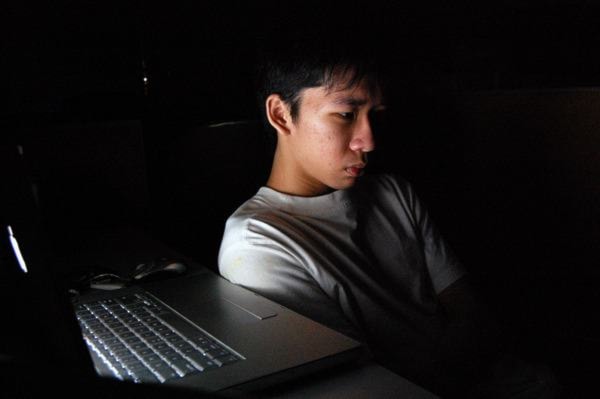Cyberbullying is the newest form of bullying, and one of the most complex, according to the Province's ERASE (Expect Respect and A Safe Education) Bullying Strategy website.
The website goes on to explain the complexity of cyberbullying is because "it’s constantly evolving and changing with new technology and social media sites, and it has no boundaries – it can reach a child anywhere, anytime, and its impact can be very serious and harmful."
Highland Secondary School teacher Tara Colborne — who has written pieces about cyberbullying, and is organizing some Pink Shirt Day anti-bullying activities with her leadership class — says cyberbullying can be even more hurtful than traditional face-to-face bullying.
"In many ways it is worse to be bullied online because more people are involved and bear witness to your humiliation, and share your humiliation, and tag your humiliation," she says.
"Without a doubt, online bullying is continuing to grow. Facebook, as we know it, started in 2004 and it seems that just nine years into this massive social experiment, kids have grown a bit desensitized to the nastiness that occurs far too regularly.
"The good news is that more and more young people are saying enough is enough and walking away from their Facebook account."
Dr. Shelley Robinson — a vice-principal at Mark R. Isfeld Secondary School with extensive experience in schools with active technology programs — adds helping youth understand the ramifications of what they do online is key to fighting back against cyberbullying.
"The key thing that I've discovered is that there needs to be a real concern for building something called digital citizenship, and having a real awareness around, what does it mean to be a good digital citizen," says Robinson. "In an age of high use of technology, that becomes not only our friend in education, but can be our enemy if we're not working with parents and students around how to use it wisely."
She notes a school's ability to stop online bullying at school is becoming more and more difficult because students don't need to use school computers as much anymore.
"Whenever you have an active technology program and you start having something that educators refer to as BYOD — which is Bring Your Own Devices — you start having students using their own phones, their own iPods, their PlayBooks, their iPads, they start coming and they start having a tremendous amount of flexibility working with the bandwidth of the school to be able to access the internet," she says.
"The challenge for us now with BYOD, Bring Your Own Devices, is they own those devices, so all we can do is suggest 'you can't use those anymore in school, please leave them at home,' but once they're at home there's nothing that we can really do unless we've got the parents on board."
She notes schools get involved sometimes, especially if there's evidence like screen-shot photos showing bullying happening on social media sites, but parents need to be more aware than ever of what their children are doing online.
The ERASE Bullying Strategy website also says monitoring your children's activity online is very important.
The website states some signs that your child is a victim of cyberbullying are if he or she:
• Unexpectedly stops using the computer or spends an increased amount of time on it
• Appears nervous or jumpy when they receive an instant message, text or e-mail
• Seems uneasy about going to school or going outside
• Show signs of anger, depression or frustration after using the computer, receiving a text, etc.
• Avoids discussions about what they are doing online
• Becomes abnormally withdrawn from friends and family
Some signs you child may be a cyberbully are if he or she:
• Quickly switches screens or closes programs when you walk by
• Uses the computer at all hours of the night
• Gets unusually upset if he or she can’t use the computer or cellphone
• Laughs excessively while using the computer
• Avoids discussions about what they are doing online
• Uses multiple online accounts, or one that isn’t theirs
Some suggestions to prevent or address cyberbullying in your home are: encourage your child not to respond to cyberbullies; keep evidence of cyberbullying, such as printing out e-mails or photos; contact the police with username details; and contact your child's school among other things.
For more information on cyberbullying including more tips to preventing or addressing cyberbullying in your home, plus information about other forms of bullying, visit www.erasebullying.ca.
writer@comoxvalleyrecord.com
